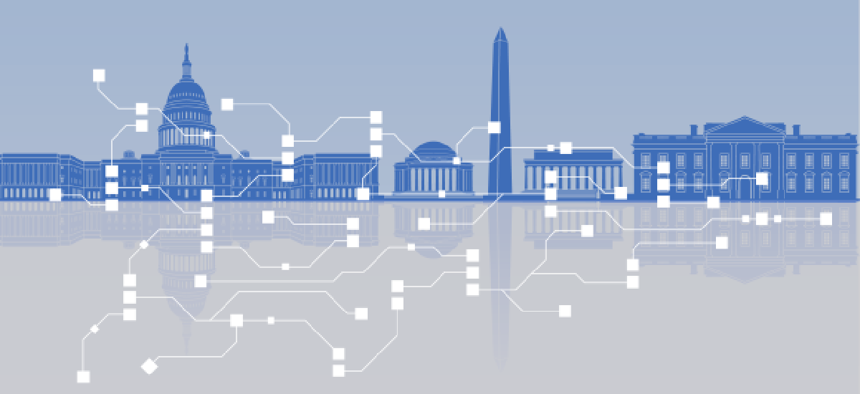GSA ramps up blockchain exploration


Connecting state and local government leaders
The U.S. Federal Blockchain Forum will give stakeholders an opportunity to develop, share and discuss practical use cases for blockchain technology for agency missions.
When the General Services Administration’s Justin Herman launched a pilot program for virtual assistants in April, he did not expect more than six agencies to be interested. Today, 27 agencies have submitted potential uses cases for artificial intelligence-based personal assistants to GSA's GitHub repository.
Herman, who leads GSA’s Emerging Citizen Technology Program Office, is already working on his next pilot program to bring blockchain into the federal government space. On July 18, Herman’s office will be hosting the U.S. Federal Blockchain Forum to collect potential use cases for blockchain and determine how the tech would work in the public sector when it comes to resources, policy and compliance.
“We launched the U.S. government blockchain community a couple of weeks ago, and it now includes more than 100 managers across the federal space, state and local blockchain program managers and White House advisors as well as the Congressional Blockchain Caucus,” Herman told GCN.
Herman’s office was designed to help government agencies create tangible use cases for technologies that are reaching a tipping point. “Through the Emerging Citizen Technology Program, we are putting together governmentwide initiatives that are uniting agencies to start building a roadmap to identify the new resources, policies, guidance and relationships in a way that ultimately deliver the best services for American taxpayers,” he said.
Herman sees blockchain as a new way to store government information ranging from federal patents and trademarks to government credentials such as visa, passports and Social Security numbers. Blockchain is "really just a process that is going to require entities to interact and share information or transactions,” he said.
Herman’s goal is to create a U.S. Federal Blockchain Atlas and roadmap that would help agencies determine how they can use blockchain to further their mission objectives.
With so much excitement around blockchain and AI in the federal sector, one of the goals in the pilot process is to break up the “hype and magical thinking” around these technologies to see how they would work in practice, Herman said.
Government stakeholders have been sharing information on best practices for blockchain adoption through federally hosted listservs. “The listservs are currently walled gardens so agencies can freely collaborate and share,” Herman said.
Marian Cook, chief strategy officer for enterprise IT at the Illinois Department of Innovation & Technology, shared some internal resources that the state is using to implement its five test cases for the Illinois Blockchain Initiative.
Interest in blockchain has been building across government. John Bergin, the business technology officer at the DOD’s Office of the CIO, suggested using blockchain to help protect intellectual property when the Navy uses 3-D printing to make repairs on aircraft carriers. The Food and Drug Administration is working with IBM to explore blockchain as a way to secure the efficient and scalable exchange of health data.
This week, GSA plans to expand the blockchain and AI communities with an announcement that individuals without .gov or .mil will be able to get on the federally hosted listservs.
“The new communities will take the guess work out of this process so we can interact with businesses in a fair way and not pick winners and losers,” Herman said.
Efforts are also underway to bring in blockchain innovations from the private sector organizations such as World Bank and companies working with tech accelerator Dcode42.
The potential use cases for blockchain will be posted in a public GitHub repository.
The ramp-up of the blockchain pilot process doesn’t mean that efforts to bring virtual assistants to government services are complete. Herman said he wants to create a public forum to showcase some of the lessons learned from the AI pilot, but he has run into challenges finding the conference space to host an event at this time of year.
Additionally, the technologies are evolving faster than the current collaboration processes used to discuss and vet them.
“With the pilot, we learned that the partnership and events schedule that people are accustomed to is not able to keep up with the reality of the mission pace at the moment,” Herman said. “We are trying to create a blend of aggressively moving forward in a way [that we can be confident in our approach] but also publicly demonstrate that we are doing due process through compliance and standards of public service.”




